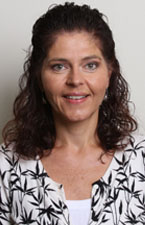Should women begin breast cancer screenings at age 40 or 50? Should screenings occur annually or every other year? What about women with a strong family history of breast cancer? Are mammograms sufficient, or should women request additional or even alternate testing?
Breast cancer screening guidelines have been confusing the last few years, but Magee-Womens Hospital of UPMC’s stance remains very clear: Women should begin getting mammograms at age 40 and continue with yearly mammograms. If a woman has a strong family history of breast cancer, she should consult with her physician to determine the ideal age to begin screening, which may be earlier than age 40.
- Tomosynthesisor 3-D mammography, uses low-energy X-rays to create a 3-D image of the breast. This new technology has an approximate 30 percent reduction rate in recalling patients for additional, unnecessary evaluation as well as a significant increase in cancer detection over standard mammography alone.
- Ultrasound imaging uses high-frequency sound waves to produce images, and may be used in addition to mammography to help radiologists determine if abnormalities in the breast are solid tumors or fluid-filled cysts. For women with a moderate increased risk of breast cancer who also have dense breast tissue (based on mammography), ultrasound has been shown to increase cancer detection.
- Magnetic Resonance Imaging (MRI)s used in conjunction with traditional mammography to provide high-quality images that may lead to the early detection of breast cancer for high-risk women. MRI is also used to help plan breast surgeries and for other diagnostic reasons.
Recent advertisements have promoted thermography as a viable choice for breast cancer screening. Despite widely publicized claims to the contrary, thermography should not be used in place of mammography for breast cancer screening or diagnosis. Thermography produces an infrared image that shows the patterns of heat and blood flow on or near the surface of the body, and marketing materials claim it can detect breast cancer years before mammography, but there is absolutely no scientific data to support this claim. Neither the Food and Drug Administration nor Magee supports replacing mammography with thermography.








